Perlethorpe School
Perlethorpe Church of England School was built in 1861 by the 3rd Earl Manvers. It was designed by Salvin and predates the St John's Church, Perlethorpe Church, on the opposite side of the road. A typical attendance figure for the late 19th century was about 40 children. This figure would go largely unchanged as the decades passed, before dropping significantly in the late 1960s.
In October 1879 the school was extended, probably by the addition of a second classroom to separate the juniors from the seniors, and the new School Headmistress Sarah Jan Wass recorded that the desks had also arrived. 1879 was also the year when formal registration of the pupils commenced at the insistence of visiting School Inspectors. In 1897 the classroom was illuminated by gas supplied from the Woodyard, and became a popular reading room for people on the estate who paid a small subscription to attend on Monday, Wednesday, and Friday evenings, between 7 pm - 8 pm.
Teaching methods involved the use of a tiered seating gallery, which ensured all pupils could see and be seen at a time when children would sometimes be taught in mixed groups by a pupil monitor. The gallery at Perlethorpe School was situated under the windows on the front of the building, against which our backs were turned. I have memories of being a junior at Perlethorpe School but joining the senior's class for lessons in tying shoe laces and "weaving". On these occasions I remember seeming to look down upon Mrs Bruce's desk across the room from what must have only been a slightly higher level. The use of a gallery persisted into the early 1950's at Perlethorpe even though HMI reports of 1904 called for its removal.
Before the renovations of 1959 the pupils' toilets were stagnant metal drums with wooden seats situated on the right of the building where the modern entrance porch is today. Late 19th / early 20th century girls’ needlework classes involved making red cloaks from material provided by Lady Manvers, wife of the 4th Earl, which they had to wear to and from school. If ever a coach carrying Lady or Earl Manvers should come into view the children were expected to stop and curtsy or bow. This practice continued into the 1950's when my sister and I would stand still and politely wave until her car had passed. Until 1959 the two classrooms at Perlethorpe School were each heated by a central pot bellied stove, its fuel supplied by the Woodyard. According to HMI reports there had been no separate office accommodation for teachers as late as 1920, and this was still likely the case into the 1950's.
Pupils from Budby would walk to school via Thoresby Lake, until that route was banned when the ice on the lake became too great a temptation. Sometimes they would hitch a ride on the milk cart, and risk being told off if the cart was late. Education was not as high on the average family agenda as the seasonal chores on the farm which might require their assistance, and there was no Secondary School. On the day after their 14th birthday the pupils left school to start work on the Estate. That changed in 1927 when pupils over the age of 11 would move on to Edwinstowe School for the first time. In the early 20th century the Girls Friendly Society would meet in the school, engaging in such activities as knitting gloves or scarves for the Navy. This was a very popular club, as the boys played their cricket or rang the church bells.
During World War 2 a total of approximately 17 evacuees from heavily bombed Sheffield attended Perlethorpe School at one time or another, but their attendance was usually fleeting as homesickness set in. In 1940 Miss Lizzie Bradley became Headmistress and a year later was mentioned on the BBC for sending the £7 she raised by carol singing to the Chancellor of the Exchequer. (You can read more about Perlethorpe during World war 2 on THIS LINK). 1943 saw the introduction of a school canteen, and records show that 19 pupils stayed for a hot meal at dinner time. In 1944 Miss Ida Brett became Headmistress, succeeded by Miss J E Bruce in January 1950.
See also: Perlethorpe School Teachers, Perlethorpe School class of c.1954, Perlethorpe School (environmental centre), Perlethorpe School Environmental Centre renovations 2015.
Labels: Perlethorpe Environmental Education Centre, Perlethorpe School, Thoresby Park




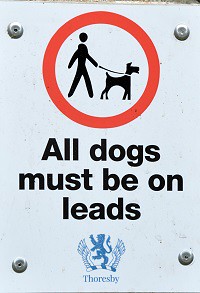 Thoresby Hall Hotel, Sherwood Forest and Clumber Park are recommended attractions for a day trip or short vacation. The
Dukeries area is of keen historic interest. NOTE: Apart from public domain postcards and brochures ALL photographs herein are copyright Ian Gordon Craig, exclusive permission granted to Thoresby Estate for their use elsewhere.
Thoresby Hall Hotel, Sherwood Forest and Clumber Park are recommended attractions for a day trip or short vacation. The
Dukeries area is of keen historic interest. NOTE: Apart from public domain postcards and brochures ALL photographs herein are copyright Ian Gordon Craig, exclusive permission granted to Thoresby Estate for their use elsewhere.
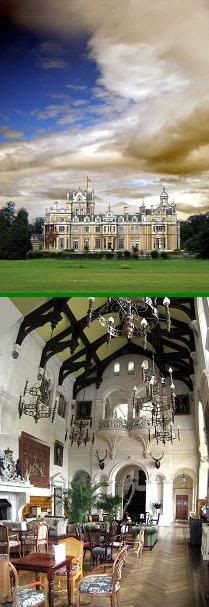 Thoresby Hall as photographed Summer 2009, now a successful Warners Hotel.
Thoresby Hall as photographed Summer 2009, now a successful Warners Hotel.
 Robert Pierrepont (1584 - 1643), 1st Earl of Kingston upon Hull, bought Thoresby for his second son William.
Robert Pierrepont (1584 - 1643), 1st Earl of Kingston upon Hull, bought Thoresby for his second son William.
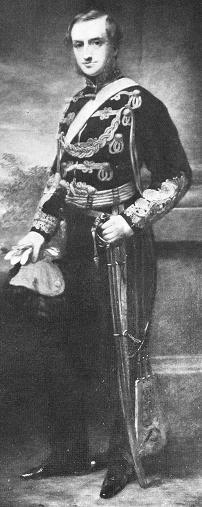 Sydney William Herbert Pierrepont (1825 - 1900), 3rd Earl Manvers, built the present Thoresby Hall, St John's Church,
Perlethorpe School, and generally shaped Thoresby Estate as it looks today.
Sydney William Herbert Pierrepont (1825 - 1900), 3rd Earl Manvers, built the present Thoresby Hall, St John's Church,
Perlethorpe School, and generally shaped Thoresby Estate as it looks today.
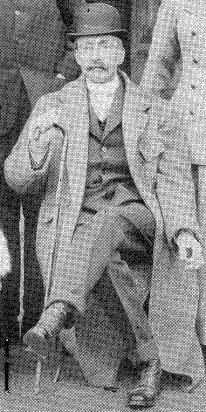 The 4th Earl Manvers (Died 1926).
The 4th Earl Manvers (Died 1926).
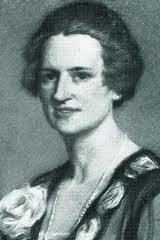 Countess Manvers (d.1984). Examples of her paintings are always on show at Thoresby Gallery.
Countess Manvers (d.1984). Examples of her paintings are always on show at Thoresby Gallery.
 ABOVE: The statue of Robin Hood in the courtyard at Thoresby Hall, by Tussaud - Birt, is showing its age, but remains one of
my favourites. The Art Gallery, crafts shops, and restaurant within that courtyard are recommended.
ABOVE: The statue of Robin Hood in the courtyard at Thoresby Hall, by Tussaud - Birt, is showing its age, but remains one of
my favourites. The Art Gallery, crafts shops, and restaurant within that courtyard are recommended.

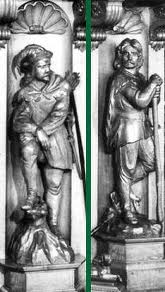
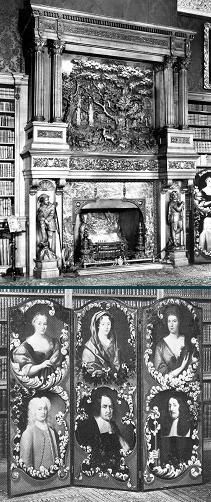 Carved oak fireplace in the Thoresby Hall library with its depiction of the Major Oak (Robin Hood's Tree), and the screen
featuring the Cromwell family. Oliver Cromwell is known to have stayed in Thoresby Hall before the English Civil War.
Carved oak fireplace in the Thoresby Hall library with its depiction of the Major Oak (Robin Hood's Tree), and the screen
featuring the Cromwell family. Oliver Cromwell is known to have stayed in Thoresby Hall before the English Civil War.
 The Green Bridge sited near the edge of the cricket pavilion in front of Thoresby Hall across which the Duke's carriage would take him to Perlethorpe Village.
The Green Bridge sited near the edge of the cricket pavilion in front of Thoresby Hall across which the Duke's carriage would take him to Perlethorpe Village.
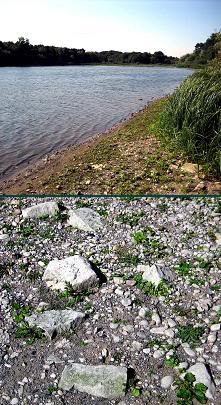 The view along Thoresby Lake towards Budby. Are these bricks at the water's edge remnants from the original Thoresby
Hall?
The view along Thoresby Lake towards Budby. Are these bricks at the water's edge remnants from the original Thoresby
Hall?
 The River Meden winds its way from 7 Ton Bridge near Thoresby Hall towards Perlethorpe Village.
The River Meden winds its way from 7 Ton Bridge near Thoresby Hall towards Perlethorpe Village.
 Budby Castle, once known as William Castle, and the River Meden winding towards Thoresby Lake under the remains of
Pierrepont Bridge, once described as classical and elegant.
Budby Castle, once known as William Castle, and the River Meden winding towards Thoresby Lake under the remains of
Pierrepont Bridge, once described as classical and elegant.
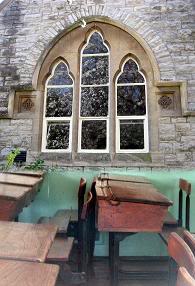
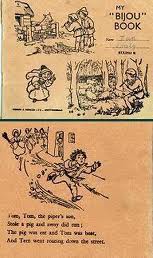 Children's exercise book from the school, 1958.
Children's exercise book from the school, 1958.
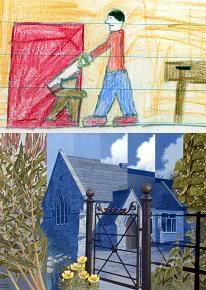
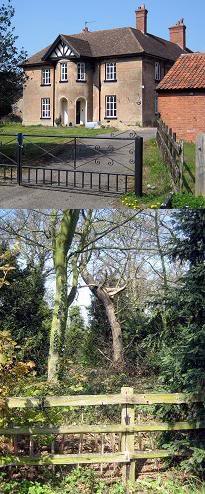



 Perlethorpe Church graveyard, where the original chapel once stood. The covered gate was a later addition in memorium to
the men of Budby and Thoresby who fell in World War 1.
Perlethorpe Church graveyard, where the original chapel once stood. The covered gate was a later addition in memorium to
the men of Budby and Thoresby who fell in World War 1.
 Robin Hood's Tree, the Major Oak, was once under the care and supervision of Thoresby Estate. Responsibility for its
upkeep changed to Nottingham City Council c.1969. Here it is pictured in in Spring, Autumn, and Winter.
Robin Hood's Tree, the Major Oak, was once under the care and supervision of Thoresby Estate. Responsibility for its
upkeep changed to Nottingham City Council c.1969. Here it is pictured in in Spring, Autumn, and Winter.

6 Comments:
Perlethorpe School, Perlethorpe Village. This picture of Perlethorpe School as it looked in the early 1950's is unique.
I attended Perlethorpe School as a 9-year old for a couple of months in the autumn of 1960 when I was staying at Thorseby Hall with my mother.
I have been to 6 primary schools, a comprehensive, a prep school and a public school. On the whole I think Perlethorpe was the most pleasant of them all.
Gervas Douglas
gervas.douglas@gmail.com
Sherwood Forest, the Dukeries, Thoresby park, history.
Pierrepont, Manvers, Dukeries, Thoresby Hall, Thoresby Hotel, Thoresby Park, Perlethorpe, Perlethorpe Village, Ollerton, Budby, Sherwood Forest.
Woodyard, Perlethorpe School, Perlethope Church, Budby.
Does anyone know what the floor is made from in this building? And was it part of the most recent renovations?
Hi Unknown.
I was a pupl here before and after the 1959 renovations. But I have no clear memory of the floor.
The front (senior) classroom did support a gallery and a central stove as mentioned in the text. So it wouldn't have been the well polished floorboards one sees now. But whether it was stone or wood I can't remember.
One thing I am sure of, if it was "earth" / soil in 1955, I would have remembered.
Post a Comment
<< Home